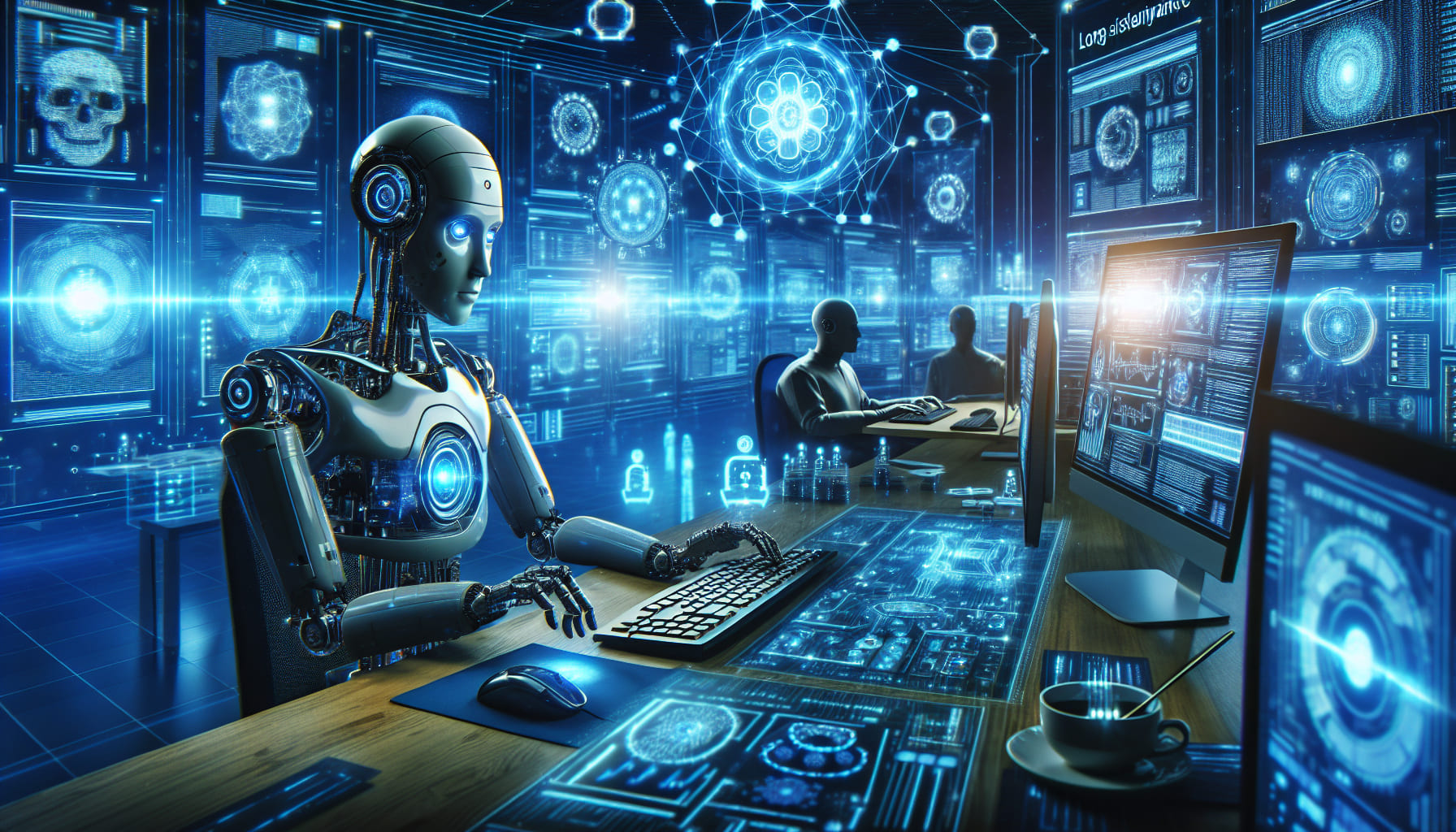The Evolving Landscape of AI: Opportunities, Challenges, and Implications for the Future
Author: Tech Insights Team

In recent years, artificial intelligence (AI) has transformed the technology landscape, shaping how businesses operate and how consumers interact with technology. This article delves into significant advancements in AI, highlighting both opportunities and challenges that arise as AI becomes more integrated into our daily lives.
One of the most notable introductions in the tech world is the Samsung Galaxy Watch8, which merges both square and circular designs into what is being referred to as a 'squircle' device. Released amidst competitive pressure from various smartwatch manufacturers, this innovation emphasizes Samsung's commitment to blending aesthetics with functionality, targeting health and fitness enthusiasts looking for advanced features and seamless performance.
The new Samsung Galaxy Watch8 showcasing its unique squircle design.
Simultaneously, advancements in AI-driven security systems illustrate the rising trend towards smart home technology. For example, Baseus has launched a range of wireless, solar-powered outdoor cameras that are incredibly cost-effective, providing a significant discount while eliminating the need for subscription fees. These developments fulfill the growing demand for robust smart home security solutions.
However, with these technological advancements come pressing concerns, particularly in the realm of cybersecurity. Recent research from Carnegie Mellon University in collaboration with Anthropic revealed that large language models (LLMs) can autonomously conduct complex cyber operations, posing severe threats to enterprise networks. This revelation underscores the urgent need for businesses to reassess their cybersecurity strategies to counteract sophisticated AI-driven attacks.

Illustration depicting the rise of AI-driven cyberattacks and the evolving landscape of cybersecurity.
In light of these threats, companies such as Hyperlink InfoSystem are advocating for the integration of AI in business operations. Their new platform, Clever247.ai, aims to automate sales and support calls, demonstrating how AI can enhance efficiency in customer service by reducing the burden on human agents while maintaining high service standards.
Moreover, the alliance between FLock.io and AIGEN Sciences represents a significant step forward in addressing data privacy barriers within biomedical AI. Their collaboration seeks to utilize decentralized, privacy-preserving AI infrastructures for drug discovery, highlighting the intersection of AI technology and healthcare that could revolutionize the biomedical field.
As AI continues to permeate various sectors, it’s crucial to acknowledge the implications it has on employment. Job markets are evolving due to automation, prompting shifts in workforce dynamics. Many entry-level positions are being supplanted by AI technologies, while concurrently, entirely new job categories are being created to manage and develop these technologies.
The current landscape, while filled with innovation, also brings about economic challenges. A current report suggests that significant investments will be necessary to upgrade data centers to support the growing computational demands of AI technology, with an projected expenditure of $6.7 trillion by 2030. This financial burden poses a daunting challenge for organizations wishing to remain competitive.

President Trump’s executive action plan to expedite AI infrastructure projects could have substantial economic implications.
Addressing the implications of AI extends into social realms as well; the use of AI as a substitute for therapy raises significant ethical questions. Sam Altman, CEO of OpenAI, has highlighted the privacy concerns surrounding therapy sessions conducted via platforms like ChatGPT. Users should be aware that conversations are not guaranteed immunity from legal actions, which raises critical issues surrounding confidentiality and trust in AI applications.
In conclusion, as AI continues to evolve, it ushers in both opportunities for growth and new challenges that society must navigate. Stakeholders from various sectors must collaborate and proactively engage with these technologies to harness their potential while safeguarding against their associated risks.